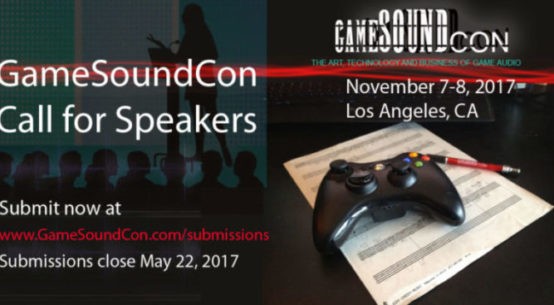
Review by Tom Garner
Edited by Katie Tarrant
Developer: Tequila Works
Publisher: Game Trust
Lead Composter: Cris Velasco
Audio Director: Steve Whetman
As an unverified source online states, Agatha Christie once wrote that “everyone is a potential murder – in everyone there arises from time to time the wish to kill – though not the will to kill”. This rather poetic statement (arguably very true – sit in standstill traffic for more than thirty minutes and see) neatly summarises the central theme and challenge of The Invisible Hours. Built from the ground up for VR, The Invisible Hours presents a new way of experiencing the classic ‘whodunit’ stories popularised most famously by the works of Christie.
The premise is the classic murder mystery template. On invitation from a mysterious host, a world-weary gentleman arrives by boat to a remote, tiny, and isolated island atop which stands a great mansion. The sea is rough, the edges of the island are treacherous and the rainfall is heavy. Arriving at the front door, our protagonist discovers the recently deceased body of the host. Several guests emerge, as does the obligatory butler. They may all have the wish to kill, but which of them has the will?
The Invisible Hours takes heavy influences from film, television and literature, though its nearest equivalent in video games is arguably And Then There Were None (AWE Productions, 2005), a third-person point and click adventure game based on a popular Agatha Christie novel. Where The Invisible Hours stands apart, however, is in its role for the player. Rather than embodying a named character within the narrative, the player assumes the role of an audience member, observing the story as if they were watching a play; unable to intervene in the sequence of events. The player can teleport around the island freely and search for and collect clues by inspecting various items. Other characters do not respond to the presence of the player in any way. The standout mechanic of the game is the player’s ability to pause, rewind, and fast-forward time. This enables the player to re-play various events and, most interestingly, wander away from the main action to see what other events are occurring in the shadows.

A fitting line as you move from the theatre to the island.
Music
Compositionally, the score is certainly well-produced and perfectly fitting for the theme of the game. The balancing of the instrumentation is excellent and the deftly woven textures gently pull the listener’s attention from one instrumental lead to the next. The harpsichord, oboe, and strings emulate a sense of ‘vintage-Christie’ very nicely. Dynamics are well-managed with tight rises precisely accentuating spikes in gameplay tension. The main theme stands out in particular, with a melody that ebbs and flows as if it were the waves lapping against the island cliffs. This melody and the underlying rhythmic progression reappear at various points throughout the score, successfully walking the fine line between supporting consistency and becoming overly repetitive.
There are a few minor quibbles, however. Several of the cello phrases consist of rather longs notes with limited nuance in the performance, which creates a slight droning effect in places. Additionally, some of the more intense sections of the score are light on bass and percussion which lessens the overall impact slightly.
With the exception of a few standout elements (such as the brilliantly unusual pitch-bending Theremin that pops us in a few places), one further criticism is that the music is generally more of an emulation of the classic murder mystery form than an exploration. It adds little surprise to the formula. The uniqueness of The Invisible Hours, however, is arguably in it being built bespoke for VR, utilising the exclusive qualities of the technology to create an experience that feels new and innovative whilst also remaining faithful to its source material. It is the ‘remaining faithful’ target that the score clearly aims for, so although clichés in the composition are present throughout, they make sense within the overall intentions of the game.
As a means of directly supporting the gameplay, the music largely follows the main thread of action – allowing the player to more easily follow this thread and determine whether they are in a location that is worth exploring at the present time. Another great little touch is presented at the very beginning of the game. As the theatre curtains part, the sounds of an orchestra tuning (positioned in 3D space) can be heard before the underscore commences. This really helps establish the ‘meta’ nature of the game.
Gustaf heads towards the mansion
Sound Design
The positional/3D audio is generally very well done and arguably one of the better examples of 3D sound in current VR games. There is clear difference along the horizontal plane, with smooth transitions as sound objects move around you. The use of exaggerated muffling when a sound is behind you does detract from the acoustic realism a little, but it greatly supports the gameplay, helping the player easily determine if a sound is coming from the front or from the back.
Distance is also very well realised. For example, as you move closer to the ticking grandfather clock in the mansion’s atrium, the sound of the ticking becomes both louder and distinctly clearer as you approach. Although, it is difficult to tell how accurate the occlusion (the muffling of a sound when an obstruction is in the way) is as there are various points where you can hear speech through a closed door just as clearly as when that same door was open.
Little touches (again), such as varying the timbre of all character’s footsteps to acoustically reflect the surface they are walking on, do an excellent job of building and maintaining the immersive experience. There is also a lot of detail in the ambient soundscapes but this causes a minor problem when teleporting around the environment. As the teleportation movements are not smooth, the changes in the ambiences don’t cross-fade. The effect of this is that even if you buy viagra without prescription teleport very short distances, the sounds you hear can suddenly change without any corresponding change in the overall environment. This is first apparent towards the start of the game as you ascend the stairs to from the jetty to the mansion. Towards the top, during a teleport between two very similar spaces, a heavy rain sounds comes in, suddenly and seemingly from nowhere.
The audio interface is very minimal and almost entirely diegetic, with feedback sounds relating to the properties of the object you are inspecting. For instance, pick up a book and the “clump” sound of a book being pulled from a stack or a bookshelf can be heard. Pick up a metallic object and a sound plays that is very similar to the classic “shing!” sound often heard when a sword is unsheathed. Focusing on diegetic interface sounds always works very well in VR, as it establishes deeper connection between the player’s actions and the virtual world, and it certainly works well here.
Dialogue
I am compelled to admit my expertise do not extend to voice acting, but as an everyday observer the dialogue throughout the game (both in terms of script and performance) is very true to the Christie template. As a 1920’s piece, the language feels ‘of the time’ and conversations flow naturally. Henning Valin Jakobsen’s weathered lead performance as Gustaf Gustav stands out, with a performance that somehow comes across as both defeated and commanding. Other performances are solid and there is an impressive range of vocal tones, helping to give each character a distinct vocal profile.
Conclusion
The Invisible Hours offers the opportunity to experience an otherwise tried and tested formula in a new way. There is enough evidence throughout the score and sound design to conclude that these aspects were taken seriously in the game’s overall development. Whilst not without flaws, the game’s sound contributes significantly to the experience. If you enjoy a good whodunit, this game comes highly recommended.
LINKS
We hope you enjoyed Tom’s review, check out others in our Reviews section. Don’t forget to sign up to our Monthly Newsletter to make sure you don’t miss out on our reviews and interviews.
We’re also running a Patreon campaign to make sure we can keep bringing you regular, high quality content if you’re feeling generous! Thanks for even sharing!
The Sound Architect





